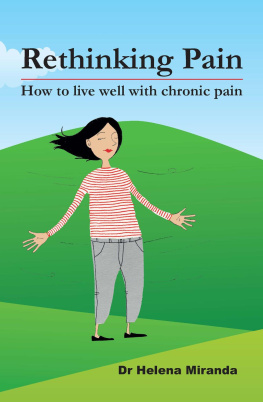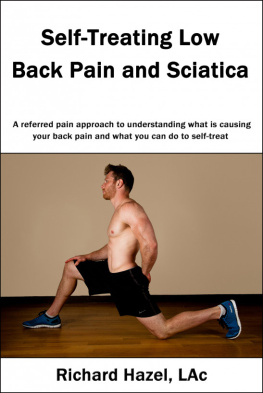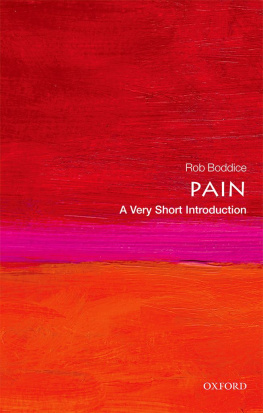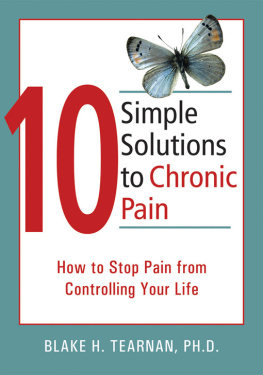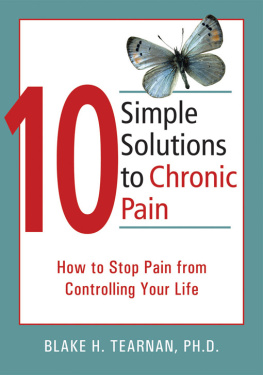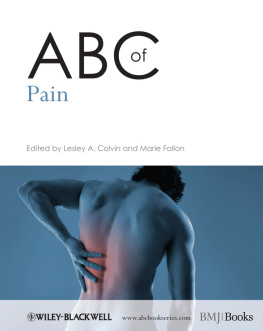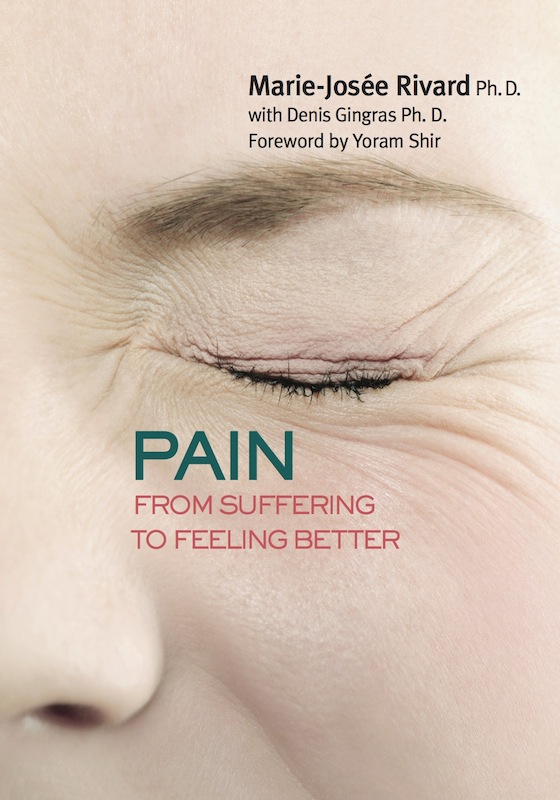To the women and men with chronic pain Ive met over the years, whove shared their stories and given me the privilege of understanding what they were going through. Your perseverance and your search for wellness are a constant source of inspiration. This book is for you.
Foreword by Yoram Shir, MD
Humans differ substantially from one to the other. We differ in our sex and ethnic origin, in the conditions and climate in which we live, in the food we consume, in our genetic heritage, and in our diverse life experiences. Nevertheless, there are things common to us all, one of the most obvious of which is the perception of pain. From the day we are born until the day we die, we all experience pain almost daily. Pain of diverse origins has become so embedded in our lives that its mere existence is perceived as almost normal and, many times, as an acceptable phenomenon. Painful perceptions such as an occasional headache, a muscle ache ensuing from physical activity, abdominal pain, minor incidental injuries, and pains associated with menstruation, to name just a few, are familiar. In most cases, this familiarity is reassuring, since past experiences have taught us that these types of pain tend to resolve and disappear quickly. Even when we experience major trauma, injury, or surgery, events that could be associated with severe pain, the natural course of healing is often a gradual reduction in pain until its disappearance.
Our perception of incidental acute pain, even when severe, as a temporary symptom makes it difficult, and sometimes impossible, to comprehend and accept the fact that pain can actually become a chronic disease in its own right. A disease that in many respects is similar to other common chronic ailments such as ischemic heart disease, hypertension, and diabetes. The difficulty of accepting chronic pain as a disease is not the domain of pain sufferers alone. Others, including their loved ones, society in general, and, many times, the medical community itself, share the same difficulties. How else can we explain the fact that chronic pain one of the most common ailments known to humankind, affecting at least percent of the worlds population is so underestimated and undertreated?
Our inability to fully understand chronic pain and its effects augments the suffering of people affected by it beyond the burden of the disease itself. Take for example a patient with long-standing insulin-dependent diabetes who needs careful and constant control of his blood sugar. Try to imagine his emotional response (not to mention the medical consequences) if exposed to comments like: Get a hold of yourself, Stop complaining and go on with your life, and You dont need all these medications you insist on taking. This kind of attitude, un-likely to appear when coping with the diabetes itself, might surface when coping with painful peripheral neuropathy one of the most devastating consequences of diabetes, characterized by an intractable and constant burning pain in both feet. While the feet maintain their normal appearance, this pain could prevent patients from walk-ing properly, wearing shoes, or even covering their feet with a sheet when lying in bed at night. Can we really understand and accept such pain-mediated complaints? No wonder that many of those afflicted by chronic pain prefer to suffer in silence once they realize that others cannot comprehend the meaning of living with chronic pain.
My clinical practice, spanning more than two decades, has mainly been dedicated to the treatment of patients with chronic pain. During these years our understanding of basic pain mechanisms has increased significantly. More importantly, there are at last signs that the public, the medical community and governments have all become more attuned to the disease and its devastating consequences. It has become clearer that chronic pain is a multi-faceted disease involving both body and mind, and that for many patients a single intervention will not suffice. Nevertheless, chronic pain is far from being conquered, and our ability to cure, and even to properly treat patients suffering from it, is still limited. Our limited abilities are frustrating not only for patients. We, the clinicians, are almost equally frustrated because of the growing gap between the substantial scientific advancements in chronic pain research and our limited capacity to heal it. Like many others, I therefore strongly believe that the first step in trying to overcome the epidemic of chronic pain is to raise awareness of the problem and to enhance chronic pain education among the public and the medical community. In this context, Pain: From Suffering to Feeling Better is a timely and much-needed addition to the literature on chronic pain. This book is based on the extensive experience of the author as a clinical psychologist attending to, and treating patients with, chronic pain in a multi-disciplinary pain centre. It explores such topics as the basic mechanisms of the phenomenon of pain, its vast effect on patients well-being, the critical importance of the equilibrium between body and mind, common therapeutic options, and the importance of self-healing approaches. Hopefully, it will contribute to the ongoing efforts to win the battle against chronic pain.


